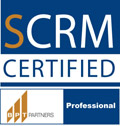Coming back from the Social CRM Strategies Seminar, I had time to reorder my thoughts and write down some of the ideas gathered over two days in London. I think I brought back something strong, relevant and new, at least to me.
Why companies should look carefully at Social CRM and Social Business? What kind of contribution can they make to the business?
In much of the material recently published on the topic, the answers range from participating in conversations, to preside over the new channels, to better understand the desires of the public, to build growing groups of ambassadors willing to promote brands and product, engaging users to collect ideas and suggestions. All these objectives are not only legitimate but even desirable when the company is exposed in social media. To me, none of them do anyway represent the deepest meaning of Social Business or Social CRM.
I started talking about the different phases of how organizations approach social media in the previous post Social Business Maturity Model. Within the various aspects, the model seeks to emphasize how Social CRM itself, the most hyped topic of the moment, is a central but still a temporary step on a longer and more complex shift in business paradigms. A shift toward the Social Buiness.
What is then a social business? A Social Business is to me
“An organization that has put in place the strategies, technologies and processes to systematically engage all the individuals of its ecosystem (employees, customers, partners, suppliers) to maximize the co-created value”
Where is the focus in this definition? Some messages are to be underlined:
- The historical Manichaean separation between the inside and the outside environments of a company is loosing importance and with it the privileged role for those ideas and decisions that the organization pushes to the market (inside-out) compared to the reversed flow of indications that from the market reach into the company (outside-in). The flow is now effectively becoming realtime and two-way
- The decision making and change management role inside companies is no longer restricted to managers (traditional organization) or to customers (as prescribed by Social CRM). Other than managers, organizational change can be driven equally by customers, employees, partners and suppliers. All these categories are moving from supporting actors to partners and protagonists
- It’s engagement not communication that makes the internal/external flow possibile. Getting individuals engaged means accepting a variety of needs and using those needs to inform the organizational growth and evolution
- The ultimate reason of existence for the corporation is no longer to generate value for its traditional stakeholders but the maximize the exchanged value between the company and the entire ecosystem. It’s a bit like the group of stakeholders had suddenly expanded including external actors. Even with this new twist, It should be noted how this exchange is intended to amplify, within a network perspective and thanks to the ecosystem, also the value generated for the old stakeholders.The Social Business is thus an organizational construct aimed to make the company more efficient under mutated market dynamics and consumer behaviors.
In other words, there is no social business if the organization is not able to:
- Consider individuals (inside and outside it) at the same level as traditional stakeholders. The company is serving the individual.
- Bring down the silos and boundaries to constantly intercept the signals coming from the people (inside and outside it). The company listens.
- Engage all the constituents to produce an effective, reactive, coordinated, transparent, appropriate response to the stimuli received, regardless of the channel of origin. The company responds.
- Extract meaning from the captured signals (coming both from inside and outside) in order to continuously improve the working mechanisms and thereby maximize the benefits for all parties involved. The company learns and evolves.
- All the processes are dynamically and organically optimized based on collected feedbacks and in line with the experience of all the individuals in the ecosystem. The company becomes social
In most projects related to social media that I know of, the action is mostly responsive. The company has moved its barycenter (phase 1), it has started listening (step 2) and it is structured to respond at some extent (step 3). The company, however, does not yet see social media as part of a learning or improvement process and even less as a social evolution of its culture,d ynamics of participation and workflows. In short, social media are juxtaposed on a company that is and remains 1.0.
On the contrary, the deepest contribution Social Business brings to the table is not limited to reacting. A social business, instead, converts both the signals (unlike the Social CRM) coming from employees and those coming from external actors into actionable insights, i.e operational guidelines for process improvement in a continuum of experience. In this regard, steps 4 and 5 are the keystone of the whole process and also the most complex to implement.
In a nutshell then, a Social Business is a company that consciously decides to develop an osmotic relationship with its environment and that is able to constantly re-calibrate itself with respect to the stimuli intercepted.
How to achieve, at least conceptually, this behavior is of course an entirely different story. I will come back to some of the pieces needed in future posts. Meanwhile, I’d like to know what you think of my Social Business definition and of the direction shown.
This post is also available in: Italian
